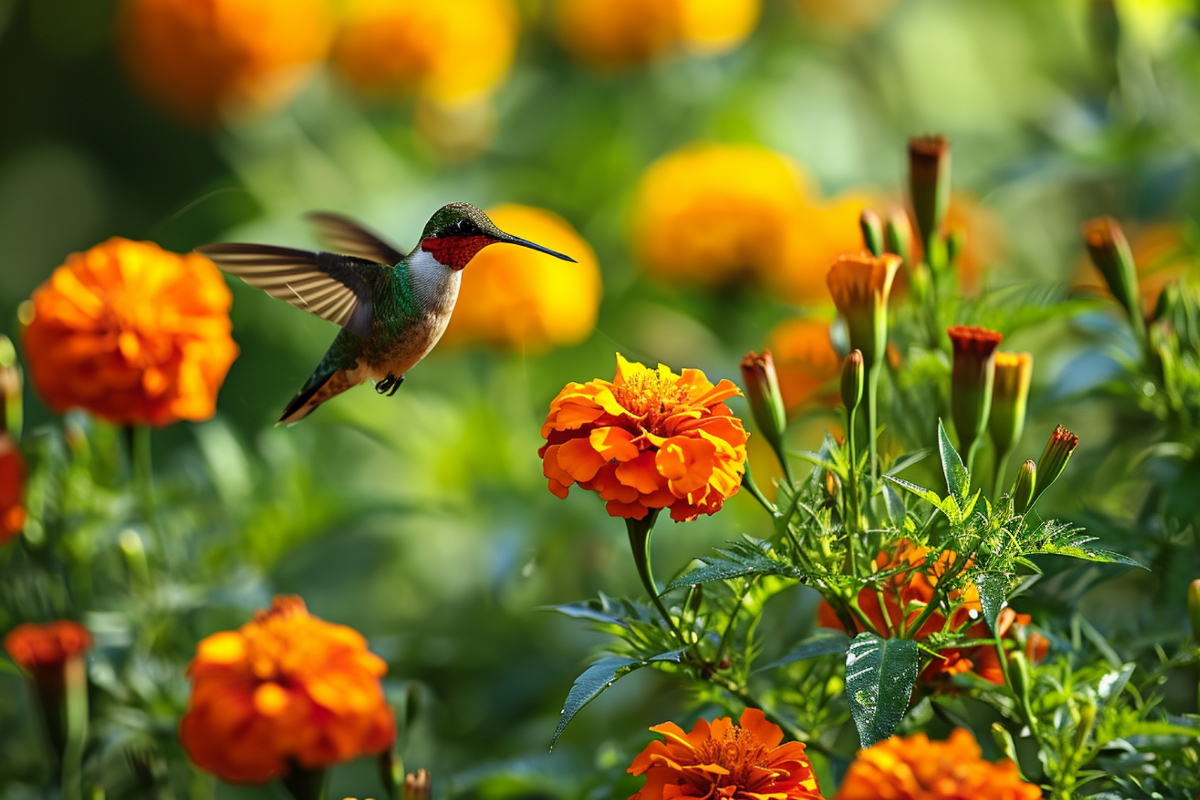When planning a garden to attract hummingbirds, many people consider including marigold flowers. However, the question arises: do hummingbirds like marigolds? While marigolds may not be the top choice for hummingbirds, they can still play a complementary role in a hummingbird-friendly garden. Marigolds produce less nectar compared to tubular flowers, which are preferred by hummingbirds. However, marigolds do offer visual appeal and can attract small insects that hummingbirds eat. Therefore, including marigolds alongside other hummingbird-favored blossoms can be beneficial.
Marigolds have a unique characteristic when it comes to nectar production and flower shape. They don’t produce large amounts of nectar like flowers that rely on hummingbirds for pollination. This is because producing nectar requires a lot of plant energy, and flowers evolve to match nectar supply with pollinator demand. Marigolds mainly rely on other insects for pollen transfer. Additionally, their short and compact design doesn’t match the physical structure of hummingbirds’ slender tubular bills, which are perfectly adapted to access nectar from similarly tubed flowers like fuchsias. This is why hummingbirds don’t flock to marigolds for nectar.
When it comes to color preferences, hummingbirds have a particular fondness for red hues, which have a high reflectance in their visual range. Flowers like fuchsia, cardinal flower, trumpet vine, and bee balm, which radiate like beacons, are highly attractive to hummingbirds. Marigolds, on the other hand, lack the rich red colors that hummingbirds love. While marigold colors may be attractive to us, they don’t have the extra visual appeal that cater to a hummingbird’s sense of color.
Although marigolds may not offer the sweetest or most convenient nectar access, they do provide an indirect benefit by attracting small insects that hummingbirds capture to meet their protein needs. Hummingbirds regularly supplement their nectar diet with tiny insects and spiders, and marigolds can contribute by drawing in these supplementary food sources. Therefore, marigolds still offer habitat value for hummingbirds.
While marigolds may not be the top choice for hummingbirds, they can still be included in a hummingbird garden as colorful secondary support players. However, it’s important to consider other factors that contribute to a plant’s appeal for hummingbirds. Incorporating native plants suited to your climate and geography is advantageous, as native species have co-evolved with hummingbird populations and provide essential food and habitat. Tubular flowers with long, trumpet-shaped or cup-shaped blossoms are also highly attractive to hummingbirds. Plant placement, continual bloom periods, and supplemental feeding through nectar feeders are additional factors to consider when designing a hummingbird garden.
By following these guidelines and creating a lively and welcoming habitat, you can attract hummingbirds and enjoy their presence in your garden. Hummingbirds provide pollination services, act as pest controllers, aid in seed dispersal, and bring joy and inspiration to our lives. Supporting hummingbirds ultimately benefits the ecosystem and contributes to a more extensive network facilitating their long-distance migration.
